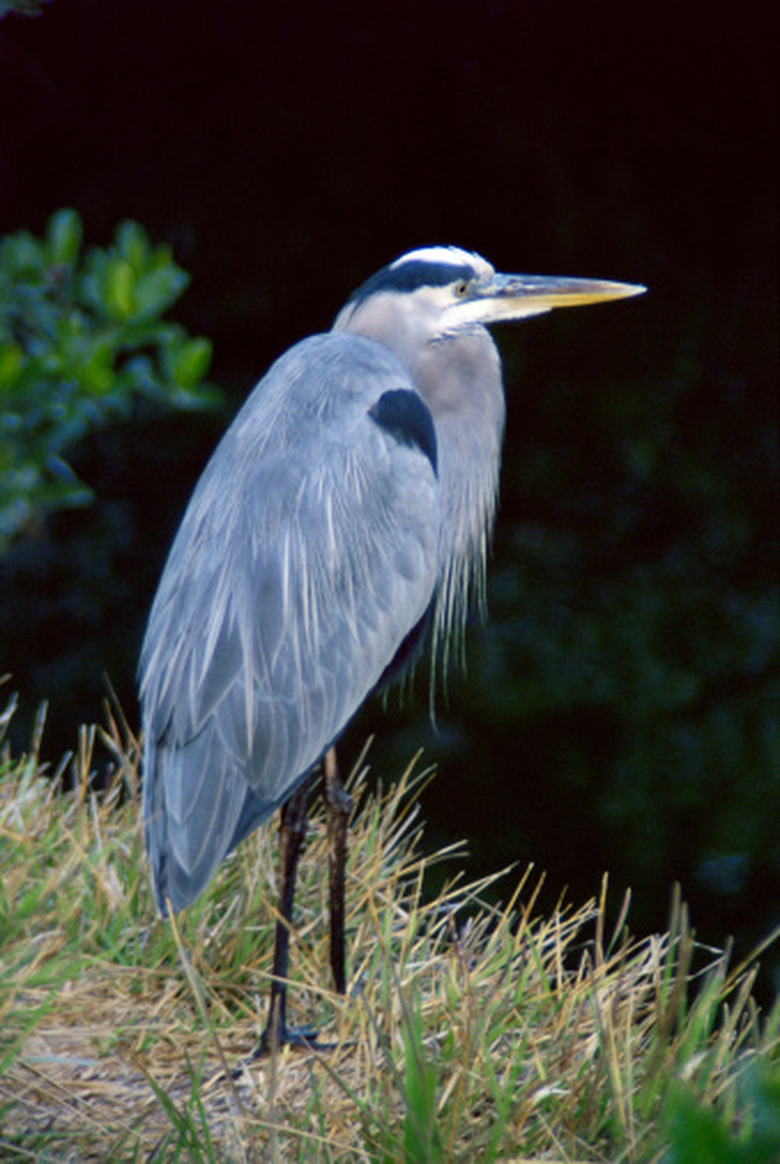The Differences Between Male & Female Blue Herons
The great blue heron is the largest heron species in North America. It is a large, slate-gray bird with white and black accents on the head and neck. Male and female blue herons look identical from a distance and are usually indistinguishable unless seen in a breeding pair. However, when viewed up close or examined in pairs, there are some significant and interesting gender differences.
Size
Size
The most obvious difference between a male and female great blue heron is size. Male herons are visibly larger than their female counterparts, typically weighing between 6 and 8 pounds. A female usually weighs between 4 1/2 and 6 pounds. The male heron's bill is longer than the female's bill. These differences are most visible when a mating pair sits side by side.
Mating Behavior
Mating Behavior
The males and females play different and distinctive roles in the heron mating ritual. Herons form mating colonies in May and June. Within a colony, herons break off in breeding pairs that remain together and monogamous during the breeding season and while sharing the responsibility of rearing young. Males in the colony perform for the females, flying large 360-degree circles over the nesting ground, calling loudly, and fighting with other males who challenge their courtship for the female of their choice. Females tend to remain in a single location during the mating ritual, calling the males to her with her song and waiting for the right partner to come to her.
Nesting
Nesting
The male goes in search of and selects a nesting site before the female's arrival at the nesting location. After selecting a site, the male begins to gather the resources needed to build a nest. He presents the twigs to the female with great pomp, laying them at her feet and shrieking. The female then takes responsibility for the creation of the nest. She takes the gifts the male brings her and either builds a new nest or uses the supplies to repair an old one. The female then lines the nest with leaves and plants to create padding for the eggs. She lays three to six eggs in the finished nest.
Immature Appearance
Immature Appearance
The great blue heron does not reach full physical maturity until it is 3 years old. Often male and female herons can be sexed at different points in their physical development according to their stage of plumage development. Fledgling herons that have just left the nest still have slate-gray down, or soft hairlike feathers, along their plume. In the spring, as yearlings, the male heron develops a pendent crest and white feathering on the head before the female counterparts. The third spring, when the heron is mature enough to breed, its legs turn bright orange and the skin around the beak turns a bright blue color. Males' legs are typically slightly darker than females, though from a distance, this distinction may not be visible.
Cite This Article
MLA
Barton, Misty. "The Differences Between Male & Female Blue Herons" sciencing.com, https://www.sciencing.com/differences-male-female-blue-herons-8672109/. 22 November 2019.
APA
Barton, Misty. (2019, November 22). The Differences Between Male & Female Blue Herons. sciencing.com. Retrieved from https://www.sciencing.com/differences-male-female-blue-herons-8672109/
Chicago
Barton, Misty. The Differences Between Male & Female Blue Herons last modified March 24, 2022. https://www.sciencing.com/differences-male-female-blue-herons-8672109/
